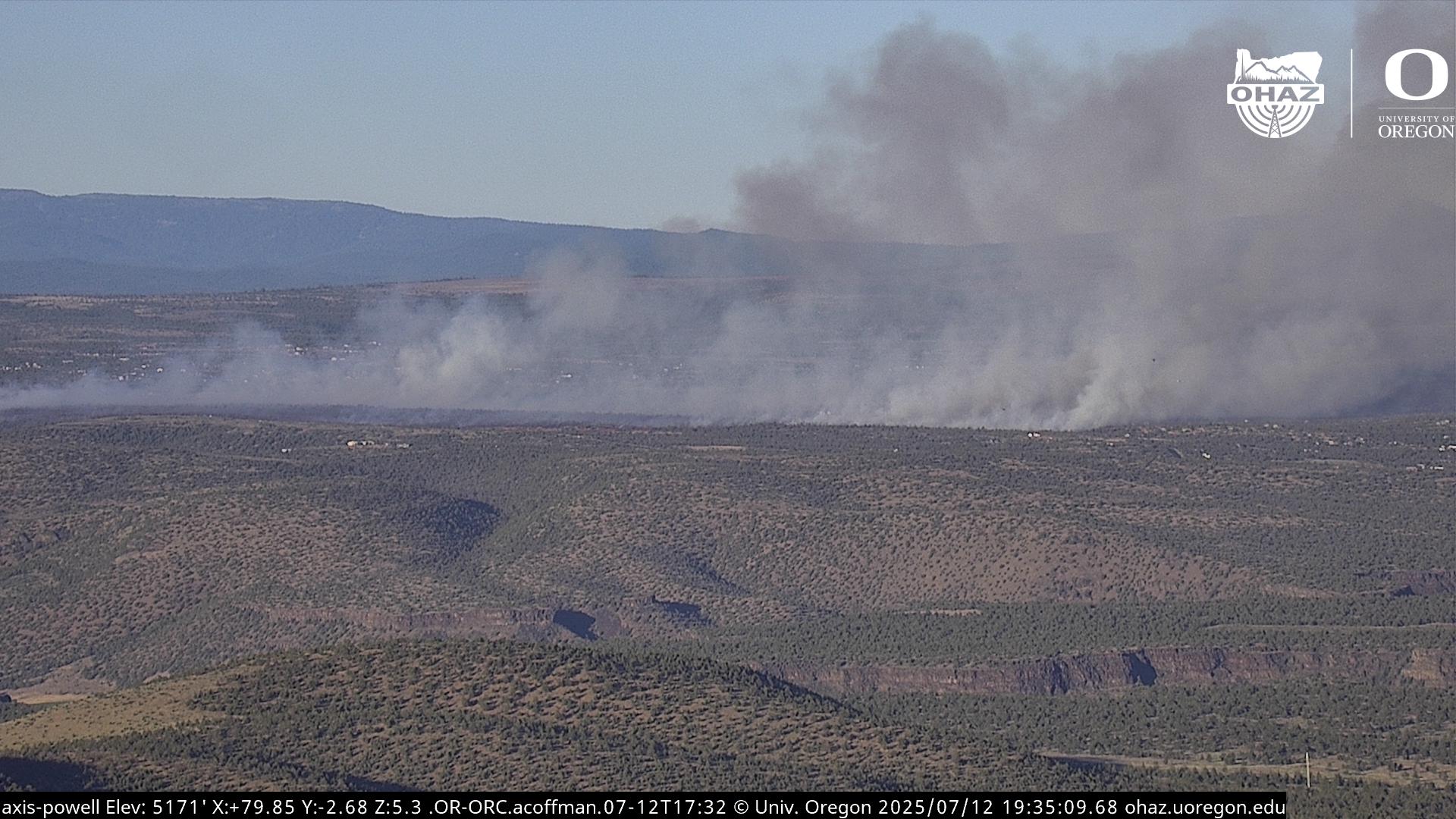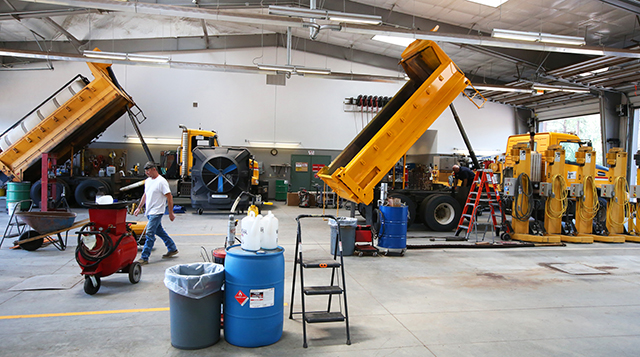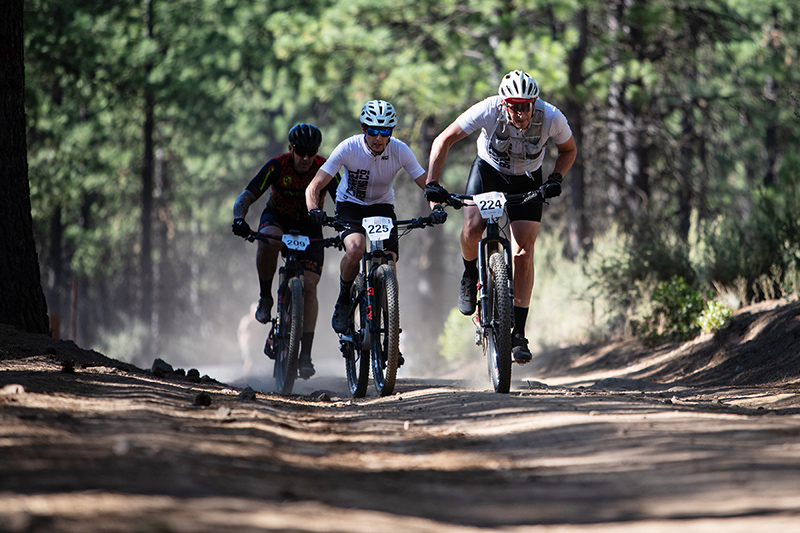Northwest Travel: Two-wheeling in North Idaho
Published 12:00 am Sunday, August 16, 2015

- Photo by John Gottberg Anderson/for The BulletinThe Cedar Street Bridge Public Market, built above Sand Creek in 1983, has become a landmark in Sandpoint. The original home of retail giant Coldwater Creek in the 1990s, the bridge was renovated in 2007 as a home to various small shops and restaurants.
{%comp-000000-tl%}
{%pr-4179886%} COEUR D’ALENE, Idaho — I considered Bend to be the road-biking capital of the Pacific Northwest until I spent several days last week in this northern Idaho city.
Trending
No fewer than three separate paved bicycling trails, each of them following abandoned rail routes and together totaling well over 100 miles, lure two-wheel travelers to encounters with mountain passes and beautiful lake shores with wildlife-rich meadows.
The Trail of the Coeur d’Alenes, for instance, runs 73 miles from Plummer, on the Coeur d’Alene Indian Reservation, across Coeur d’Alene Lake and up the valley of the Coeur d’Alene River to the village of Mullan, just below Lookout Pass.
The Hiawatha Trail is only 15 miles in length, but it crosses seven high trestles and transits 10 tunnels (one of them 1.66 miles long) through the Bitterroot Mountains on the border of Idaho and Montana.
The North Idaho Centennial Trail extends west 24 miles from Coeur d’Alene to the Washington state line, then continues another 37 miles along the Spokane River and through the city of Spokane, making it 61 miles from end to end.
This trio of trails has helped to mobilize attention on the city of 44,000 for a wide variety of cycling events, not unlike Bend. Triathlons are very popular, and the arduous Ironman Coeur d’Alene, which qualifies 40 athletes for October’s Ironman World Championships in Kona, Hawaii, is an annual highlight of the local sports scene.
The local community has also embraced the Coeur d’Fondo, which greets the autumn season in much the same way that Bend’s Pole Pedal Paddle race welcomes spring. Held the last Saturday of September since 2012, this event offers participants an opportunity to ride five different routes, from a 15-mile family route to a 108-mile run for Ironman-contesting bicycle racers.
Trending
Piccolo Fondo
{%pl-4179813%} I took half a day to ride the 37-mile “Piccolo Fondo” course between Coeur d’Alene and the village of Harrison, on the eastern shore of Coeur d’Alene Lake. My riding companion was an athlete in the Ironman category.
Andrea Barlow, a 35-year-old mother of two, began competing in triathlons last year as a way to get fit and healthy. Now she’s one of the finest female bicyclists in a region of many. She set the pace.
I, on the other hand, struggled. I straggled. But after 3½ hours following the shore of labyrinthine Coeur d’Alene Lake south, I had a much better idea of the spirit of the Coeur d’Fondo, first run four years ago.
The strange name is a bastardized version of French (“coeur” means “heart,” as in the city’s name) and Italian. A “fondo,” said race director Isaac Mann, is a “spirited ride,” although a Web search suggested it means “great endurance.” Both descriptions are accurate.
{%pr-4179879%} Barlow and I began our ride at City Park in downtown Coeur d’Alene, beside the sumptuous Coeur d’Alene Resort. We rounded Tubbs Hill, which juts from the lake’s north shore, and picked up the Centennial Trail, following it east along the water for about 8 miles to Higgens Point. Here, where the trail came to an end, we jumped a chain-link fence and rode the wide shoulder of Interstate 90 for a mile and a half to Wolf Lodge Bay, where Idaho State Highway 97 branched south.
For the next 27 miles of road, Barlow and I meandered along a densely wooded shoreline and around a dozen individually named bays, separated by ridges that put us into hill-climb mode. Much of the waterfront is dotted with seasonal residences; there are also a couple of small resorts, an impressive condominium complex at Arrow Point and a discreet and upscale private community known as Gozzer Ranch.
From time to time, we passed white-tail deer browsing by the side of the road or dashing across meadows. Osprey soared above marshlands where blue herons waded, or stared down at passers-by from their nests atop utility poles. Moose are frequent visitors to the wetlands; although I didn’t see any on this ride, a young moose had crossed an Idaho highway in front of my car two days earlier. A bicycle would be no match for the animal in a confrontation.
End of the road
The “Piccolo Fondo” ends at the beachside marina in Harrison, where Highway 97 meets the Trail of the Coeur d’Alenes. During the Coeur d’Fondo event, boats will shuttle between here and the city of Coeur d’Alene, assuring this is just a one-way ride for participants. A beer garden will turn Harrison’s historic central park into a party locale, while riders who have a sweet tooth can walk half a block to the village creamery, widely known for its ice cream and fudge.
Although a majority of Fondo riders will end their day in Harrison, many more will continue along the Medio Fondo route. They won’t stop at the lakeside village, unless it’s for an icy treat; instead, they will proceed on the automobile-free shoreline trail across the historic Chatcolet Bridge, marking the southern end of Coeur d’Alene Lake at Heyburn State Park.
“You’re going to love this bridge,” Mann said, upon meeting me and Barlow in Harrison at the conclusion of our ride. Although from the road we could only view it from a distance, I later drove to Heyburn State Park, between Plummer and St. Maries, for a closer look at this unusual structure. When the Trail of the Coeur d’Alenes was built, the Rails to Trails engineers raised the central span above the original bridge pilings, creating stair-step approach ramps that contribute to a roller-coaster descent in either direction.
Like many other bicyclists, we concluded our ride with lunch at the new Taphouse Unchained, a downtown pour house so devoted to the spoke-and-pedal culture that its barstools are unicycles and its margarita (or smoothie) mixer is the consumer: The blender is driven by peddling a stationary bicycle.
About town
For nonbicyclists, there remain plenty of activities to enjoy in Coeur d’Alene. Its namesake lake, with its 135-mile shoreline, is less commercial than California’s Lake Tahoe and more accessible than Wyoming’s Yellowstone Lake, to both of which it has been compared. The Coeur d’Alene Resort, whose 18-story tower rises high above the lakefront, gives immediate identity to the community.
{%pl-4179963%} The southern half of Coeur d’Alene Lake is embraced by the sprawling Coeur d’Alene Indian Reservation. For centuries before explorers of European ancestry arrived, Salish-speaking Indians made a home here in the foothills of the Bitterroot Range. French-Canadian fur trappers, frustrated by the tribe’s astuteness in trading (they wouldn’t swap valuable furs for cheap, shiny trinkets), declared that they had “coeurs d’alênes,” or “hearts like awls.” The name stuck.
Coeur d’Alene was settled in 1877, when Fort Sherman was built to control what Congress referred to as “the Indian problem.” Its grounds are now the site of lakeside City Park and the two-year North Idaho College, incorporati417ng the former officers’ quarters and chapel. The adjacent Museum of North Idaho administers the small Fort Sherman Museum in the fort’s powder house.
Sherman Avenue, lined with galleries, shops and cafes, is the main (eastbound) street of downtown Coeur d’Alene. The avenue is the focus of a calendar of festivals that include farmers markets, arts fairs, athletic events and the well-known Car d’Lane classic auto show in June. The back streets north of the avenue are lined with gracious historic homes, including the Greenbriar Inn, an elegant little hostelry with a popular restaurant, 315 Martinis and Tapas.
Prominent on Sherman Avenue, near Figpickels Toy Emporium, is a whimsical statue of a moose. So popular is “Mudgy & Millie,” a children’s book written by local author Susan Nipp, that the city parks department has created a 2¼-mile lakeshore trail depicting Mudgy Moose’s search for Millie Mouse, who is hiding very close by. Quite naturally, Coeur d’Alene Lake is the number one recreational focus. There’s swimming, boating, jet skiing, sailing and many other activities, including fishing (kokanee, chinook salmon and northern pike). I enjoyed two hours of stand-up paddleboarding with a rental from ROW Adventures, better known as a rafting and kayaking outfitter. In summer, Lake Coeur d’Alene Cruises plies the lake’s waters three times daily.
Sandpoint arts
Northern Idaho’s “second city” is Sandpoint, a quiet, artsy town of 7,400 people on the north shore of Lake Pend Oreille, an hour’s drive north of Coeur d’Alene via U.S. Highway 95. Like much of northern Idaho, this town has wrestled in past years with a reputation for militant conservatism. If the spirit of the arts, so prevalent in downtown Sandpoint, is any indication, that is far from the truth.
For three summer months, mid-June to mid-September, the Pend Oreille Arts Council highlights Sandpoint’s creativity with an annual Art Walk. Twenty-six different galleries in a 10-square-block area participate in this event, displaying the oils, pastels, photographs, sculptures and other works of nearly 150 area artists.
Most of the stops are along First and Cedar streets, adjacent to the lovely Cedar Street Bridge Public Market.
{%ssl-4179957,4179989,4179968,4179948%} My personal favorite was the POAC’s cooperative gallery, where more than two dozen artists exhibit a quirky collection of mostly nontraditional art. Another worthy destination for art lovers is the Columbia Bank Building (414 Church St.). The walls of its atrium and upper floors offer a permanent rotating display of numerous Idaho artists.
In the heart of downtown Sandpoint, surrounded by galleries, the 1927 Panida Theater is undergoing a restoration to return it to its Art Deco-era stature. Sandpoint also hosts an 11-day summer concert series, The Festival at Sandpoint, on the lake in early to mid-August. The 2015 schedule included Arlo Guthrie, Ziggy Marley, Vince Gill, Wilco and Trampled by Turtles.
I enjoyed a night’s stay at the Dover Bay Resort on the shore of Lake Pend Oreille. The lakefront cabins are lovely and the gourmet comfort food served on the deck at its Dish restaurant was excellent.
Pend Oreille is even larger and deeper than Lake Coeur d’Alene — 43 miles long, 6 miles wide and 1,225-feet deep. During World War II, President Franklin Roosevelt designated the lake as a huge naval training site because its depth made it suitable for submarines and sonar testing. Today that base, once home to 50,000 military men, is encompassed by 4,180-acre Farragut State Park at the lake’s southwestern tip, 4 miles east of Highway 95.
Sandpoint today is perhaps best known as the home of the Schweitzer Mountain Resort — Idaho’s second largest ski area after Sun Valley — and as a depot for Amtrak passenger trains. The two come together to make Schweitzer a rapidly growing resort destination and a popular place for real estate development.
On clear days, the views from the mountainside south across Lake Pend Oreille are some of the most spectacular in the West.
— Reporter: janderson@bendbulletin.com
Editor’s note: This article has been corrected. Andrea Barlow is 35. The Bulletin regrets the error.








